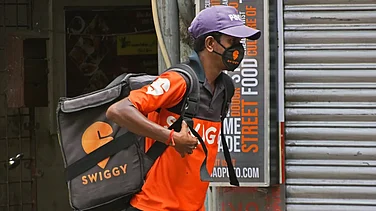Ride hailing platform, Rapido’s is now gearing up to enter the food delivery space, by tapping into its massive network of over four million riders as the company aims to shake up the duopoly long held by Swiggy and Zomato.
While previous similar attempts by the likes of Ola and Uber have fizzled out, Rapido’s move feels more grounded. With a well-established logistics network already in place, the company has announced a highly competitive commission structure, a direct challenge to industry incumbents. Rapido plans to charge restaurant partners between 8–15% in commission, nearly half of the 21–22% typically demanded by Zomato and Swiggy. This pricing strategy not only promises to boost rider earnings but also significantly cut costs for restaurant partners, giving Rapido a compelling edge.
A logistical edge over previous entrants in the food delivery space coupled with its competitive commission structure makes Rapido’s case a different story from the past. These fears have already jolted investor sentiment for incumbents Swiggy and Zomato parent, Eternal as shares of the two slid 2–3% in the previous session and fell another 1% today, as investors absorbed the news of Rapido’s entry.
Blow to Zomato and Swiggy?
Without mincing his words, Karan Taurani, analyst at Elara Capital, warned that Rapido could challenge the stable take-rates and profitability of existing leaders, if it manages to find the key to sustained execution.
Adding to that, Taurani flagged that even a 200 basis point drop in revenue growth to 17% or a 10% drop in valuation multiples for Zomato to 50x with Rapido’s entry may drag Eternal’s consolidated price target by 6% to ₹282, down from ₹300.
In the worst-case scenario, if Zomato’s gross order value (GOV) growth slows to 15% and its valuation multiple de-rates to 44x, the price target could fall further to ₹263.
“Rapido’s sharp scale-up could risk the stable operational environment,” Taurani noted, highlighting that both Swiggy and Zomato are now operating mature food delivery businesses with a decade-long presence and targets of achieving 5% adjusted Ebitda margins.
He expects the two incumbents to take a cautious approach if Rapido enters aggressively with subsidies. For Swiggy, the threat may be less severe given that it holds a stake in Rapido.
What’s the X-Factor with Rapido?
Rapido’s foray is different from that of ONDC and Ola, more so since they both suffered from last-mile connectivity issues. Rapido, on the other hand, boasts of a four-million rider network with 3-3.5-million rides daily, partly supporting logistics rival Zomato and Swiggy’s rider base of 0.44-million and 0.53-million, respectively.
In addition, Taurani also pointed out several other factors that could work in Rapido’s favour as it enters the food delivery space. These include the smart utilisation of idle rider slots during meal times, virtually zero incremental capital expenditure which could boost rider earnings and existing experience in food delivery through ONDC.
He also highlighted Rapido’s potential to cross-sell to its existing ride-hailing users, significantly lowering customer acquisition costs compared to standalone food delivery platforms. Together, these advantages could give Rapido a stronger shot at cracking the food delivery market where others have stumbled.
That said, the road ahead is unlikely to be smooth for Rapido. Beyond logistics and fleet optimisation, the company will need to grapple with challenges around customer experience.
“Rapido plans to cross-utilise its existing fleet to go head-to-head with the dedicated delivery networks of Zomato and Swiggy. However, the recent shift in consumer preference towards sub-30-minute deliveries, evident from Swiggy’s BOLT and Zomato’s earlier Quick initiative raises the bar on rider availability and service efficiency,” Taurani said.
“Balancing the demands of ride-hailing and high-pressure food delivery won't be easy. Optimising resources across both verticals will be a logistical tightrope walk. Any mis-step could risk delayed deliveries or longer wait times, ultimately denting the customer experience and hurting Rapido’s chances of building a reliable, recurring food delivery business,” Taurani added.



























